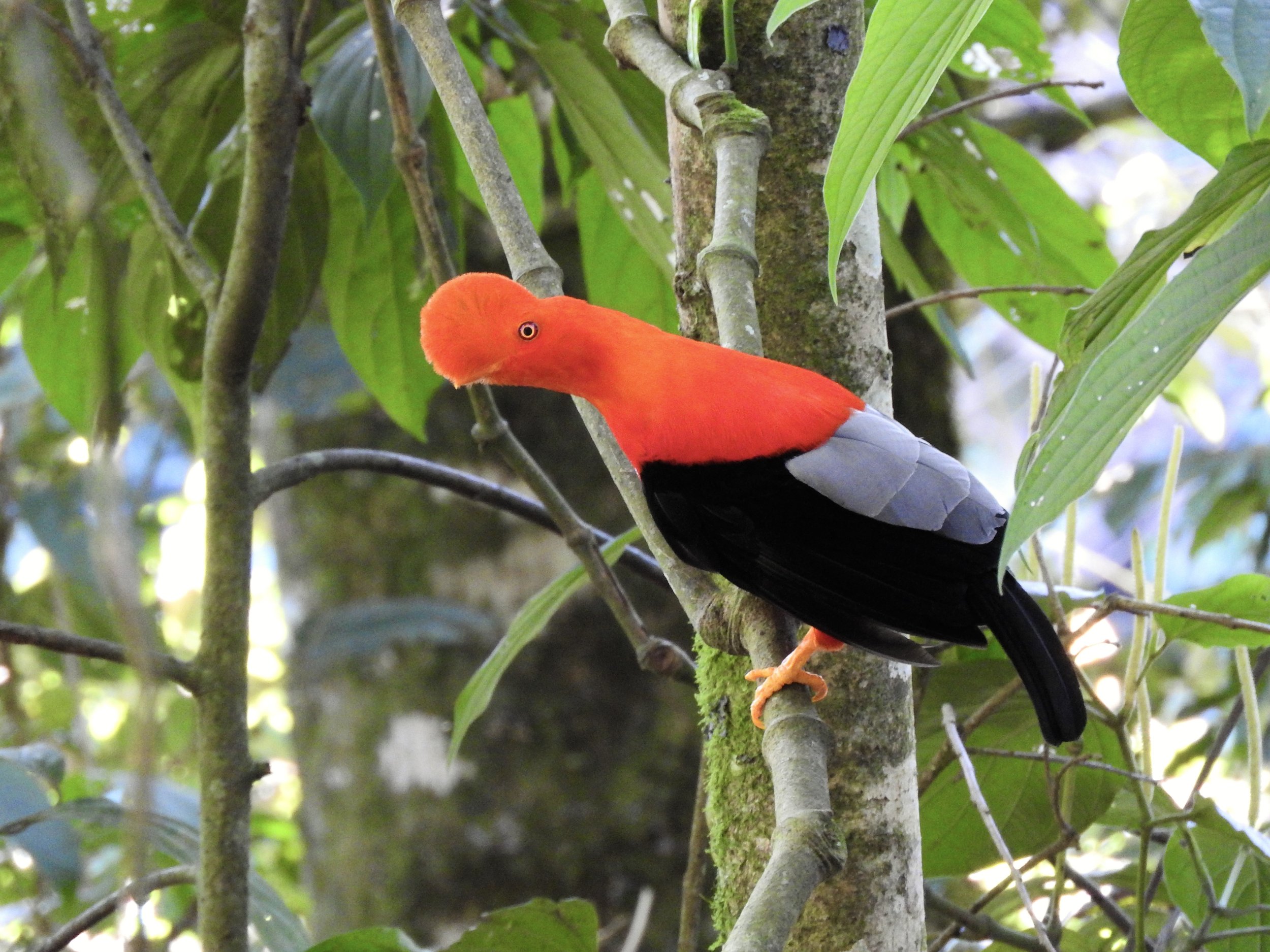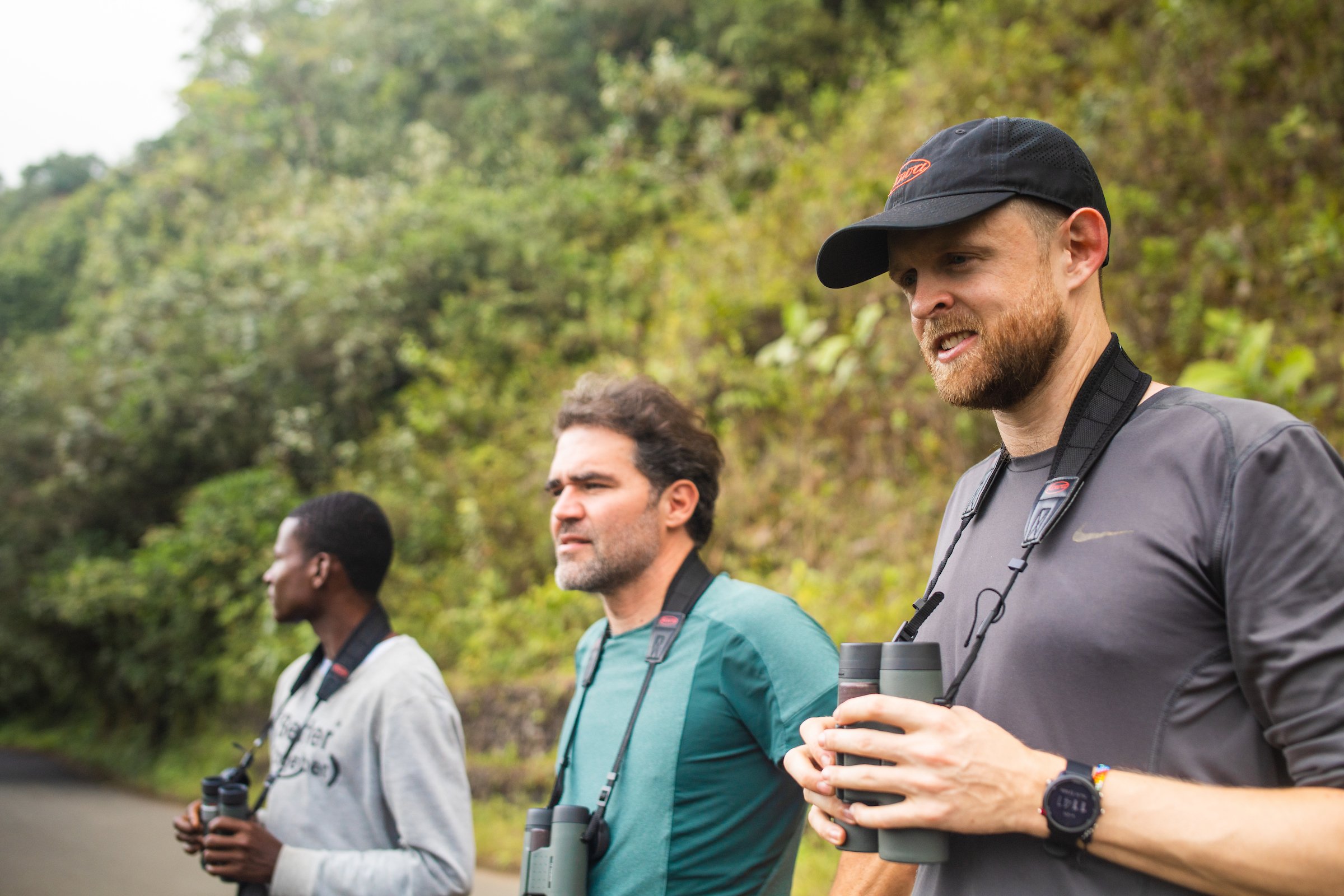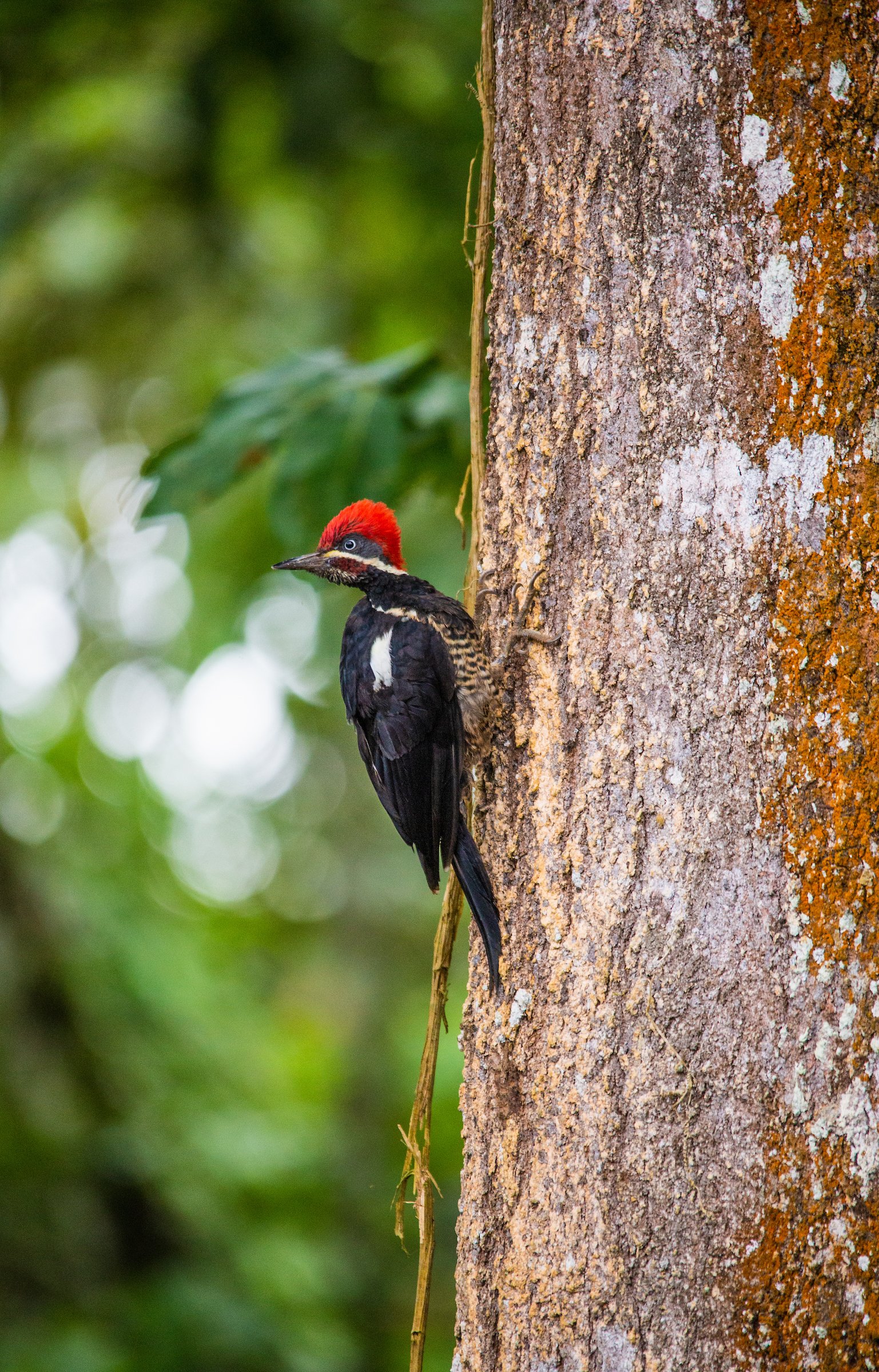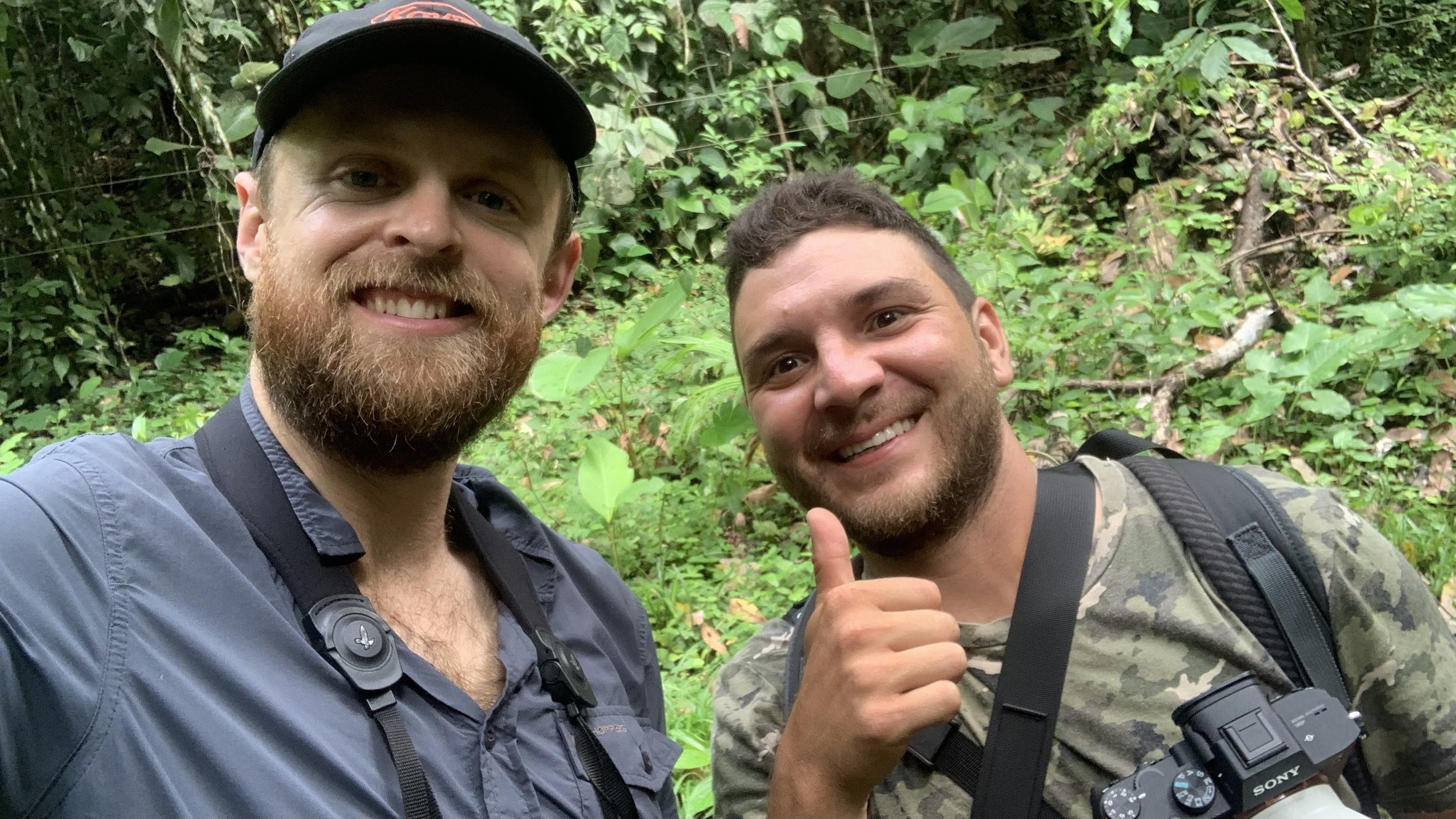Birds of Colombia: Horned Lark
Colombian Horned Lark (Eremophila alpestris peregrina)
The Birders Show host, Chris visits one of the last remaining strongholds of the Colombian Horned Lark - an endemic subspecies - and wonders how habitat and taxonomy may impact the conservation of this sadly endangered population.
In many ways, the title of this blog feels like a misnomer: the Horned Lark is perhaps one of the most widespread species around, at least geographically. It's found on five continents and has 42 recognized subspecies. So writing about it under the title "Birds of Colombia" feels a bit odd, especially given that most people are probably unaware that this species is even found in this country, let alone in South America.
Yet the Horned Lark does occur in Colombia. The only population found in the whole of South America lives on the Altiplano Cundiboyacense in parts of Cundinamarca and Boyacá. This species' entire South American population can be seen within a couple of hours of Bogotá, some of them even within the city limits. It's the most southerly global population of the species. The Horned Larks found in Colombia are also an endemic subspecies, sometimes known as the Colombian Horned Lark (Eremophila alpestris peregrina). This subspecies is considered endangered and faces several threats, not least rapidly diminishing habitat.
Birding Fact: the Horned Lark (Eremophila alpestris) is known as the Shore Lark in Europe. The “horned” name comes from the black horn-like feathers on summer male birds. The more common European name comes, as you might expect, from their primarily coastal habitat, at least in Western Europe.
I first saw the Horned Lark in a southern Bogotá park called Arborizadora Alta. It's an odd location to spot such a threatened subspecies: a windswept grassy hill overlooking some of Bogotá's most economically disadvantaged neighborhoods. Nevertheless, I went along as part of a surveying group, and the results were positive: a strong and seemingly healthy population, albeit one surrounded by development.
My first sighting of Colombian Horned Larks in a park in southern Bogotá
Recently, on a weekend birding trip to Boyacá region (the department, or state, to the north of Bogotá), I had the chance to see the Horned Lark again with a birding friend seeking his lifer. The trip itself was a bit of a Boyacá twitch, as we drove between strategic locations seeking a few isolated lifers for each group member: endemic Mountain Grackles and Horned Larks for Camilo, Lazuline Sabrewing for me, Spot-billed Ground-Tyrant for everyone.
A bad record shot of an excellent bird: the Colombian endemic Mountain Grackle
After a successful morning birding the oak forests above Duitama, where we enjoyed excellent views of the Mountain Grackle (for my money, one of Colombia's most overlooked and underappreciated endemic species), we drove south towards the Copa Reservoir. This reservoir is home to the largest known population of Horned Lark and is where the first-ever nesting records were made in 2005. A 2021 study (which can be read here) found that an estimated 133-230 individuals inhabit the entire reservoir. And while that may seem like a decent number, bear in mind that it represents between 13-23% of the entire Colombian Horned Lark population. Therefore, Copa is arguably the best spot in Colombia to observe this endemic subspecies.
We didn't have to wait long to spot the larks. After a short drive down some dirt roads to a northern peninsula where most eBird records of the lark were from, we parked up and walked down towards a grassy pasture on the lakeshore. Immediately, someone spotted movement up ahead in the short grass. As we slowly advanced towards the field, we noticed many different larks feeding on the ground around us.
It was evident over the next hour that the birds were locally relatively abundant. We counted at least a dozen individuals in this one field alone, including adults feeding recently fledged young. The adults seemed to be finding plenty of food: I followed one in the scope for quite a while, and it was pulling up a large worm or spider at least once every minute or two. Many of the birds were singing, and I enjoyed prolonged scope views of one male twittering away, perched on a small grassy knoll. I even managed some sound recordings.
It was tricky to get a sharp image of the larks, as they busily worked their way through the grass
After an hour of enjoying this spectacle, which is sadly rare in Colombia nowadays, we headed back to the car. We had at least an hour-and-a-half until our next stop, and time was creeping away. But the larks had given us such a beautiful show that it was hard to tear ourselves away. They're such subtly pretty little birds, and listening to their song on a sunny day in the Andes felt like a fundamental Colombian birding experience, at least to me.
Sadly, there doesn't seem to be much hope for the long-term future of the Colombian Horned Lark: with such a localized, vulnerable population and so few established strongholds, it's hard to see population trends reversing anytime soon, although I hope that won't be the case. As we drove away up into the mountains, I quickly snapped a photo of the peninsula: the image has an urgent aspect to it - a rapidly diminishing little island of habitat where the larks are gamely clinging on.
The tiny peninsula in Copa Reservoir where we saw the larks
One thing that the larks don't have in their favor is their habitat choice: most of the places they live are ripe for exploitation, whether through agriculture or housing development. They also don't live in ecosystems that are an "easy sell" for conservationists. Take the Mountain Grackle, for example - this endangered and endemic species mostly lives in an ecosystem that is rapidly shrinking in Colombia, high elevation oak forests. However, I would guess that convincing the powers-that-be and the general public to protect large areas of exceptionally biodiverse, visually beautiful Andean forest is an easier sell than conserving scrubby pastures in prime development areas.
Yet, these “pastures” are often home to a surprising range of biodiversity. The Bogotá park where I saw my first Horned Larks looks like an inevitable target for development since it lost its protected status in 2017. However, there’s so much more to this green space than meets the eye: along with the lark, it’s home to several endemic grasses and flowers native to the altiplano and is an important stopover point for migratory birds. What might appear at first glance to be nothing more than bare grassland can often harbor a surprising depth of biodiversity.
This endemic subspecies may also be an unwitting victim of taxonomy: if it happened to be elevated to full species status, endemic to Colombia, international birders would likely flock to accessible hotspots, keen to add a new species to their life lists. In turn, this demand would create an economic incentive to conserve, or even expand, its rapidly diminishing habitat. Sadly, since the Colombian Horned Lark is classified as an endemic subspecies, it's generally only targeted by birders looking to grow their Colombian or South American lists. Nevertheless, there is undoubtedly a strong will among Colombian conservationists and birders to protect this subspecies. Many people have done admirable work to study these birds and conserve their existing territory. Yet without that additional economic incentive, it's hard to see these few remaining habitats holding out for long.
Birding Fact: recent studies of Horned Lark have suggested that the species may actually consist of six clades (a group of organisms believed to comprise all the evolutionary descendants of a common ancestor) that may warrant recognition as separate species. A 2020 study suggested splitting the species into four species rather than six. The Colombian Horned Lark would still not warrant species status with these proposed splits.
The Colombian Horned Lark faces an uncertain future - at least this highly localised population seems to be doing well
I don't mean this blog post to come across as negative; unfortunately, as birders and nature-lovers, we are routinely observing species teetering on the brink of disappearance. Not to acknowledge that reality would almost feel like a disservice to the hardy individuals keeping their species - or subspecies in this case - hanging on.
Standing in that tiny field, surrounded by the beautiful tinkling song of the larks and watching as they expertly found worms and spiders in the short grass and fed them to their young, I felt a pang of melancholy. The highland plain of the Colombian Eastern Andes would feel diminished without that joyous melody drifting over the breeze. I hope it's a song that future generations of Colombians get to hear.


















